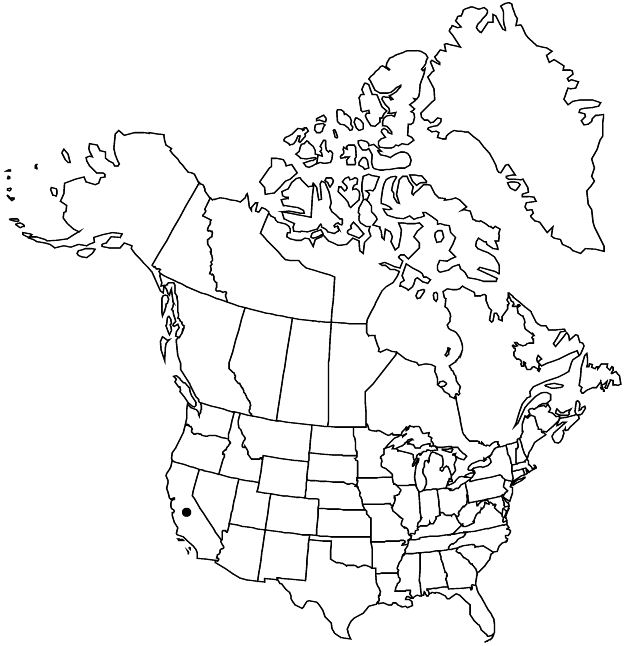Ceanothus masonii
Madroño 6: 171. 1942.
Shrubs, 0.6–2 m. Stems erect to ascending, not rooting at nodes; branchlets dark brown, rigid, ± tomentulose. Leaves not fascicled; petiole 1–2 mm; blade flat, usually elliptic or oval, sometimes suborbiculate, 7–21 × 4–13 mm, base rounded to ± cuneate, margins not revolute, denticulate most of length, teeth 9–17, apex obtuse, rounded to truncate, abaxial surface pale green to grayish green, strigose on veins, glabrate, adaxial surface dark green, glabrous. Inflorescences axillary, 1–2.5 cm. Flowers: sepals, petals, and nectary deep blue to purple. Capsules 3–4 mm wide, not lobed; valves smooth, horns apical, minute, not rugose, intermediate ridges absent. 2n = 24.
Phenology: Flowering Feb–Apr.
Habitat: Soils derived from serpentine, chaparral, pine forests.
Elevation: 100–500 m.
Discussion
Ceanothus masonii occurs only at a few localities on Bolinas Ridge, Marin County. With the exception of its leaf morphology, it bears a close resemblance to C. gloriosus var. exaltatus.
Selected References
None.
